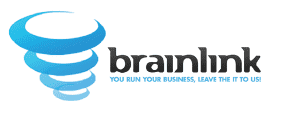NYC’s Department of Sanitation has announced firm rollout dates for the Commercial Waste Zone (CWZ) program. Beginning October 1, 2025 and phasing citywide through November 30, 2025, every business will be assigned to a designated private hauler by geographic zone—replacing the current open market system.
At a glance, this is a city operations story. For construction companies, it is also a project delivery, compliance, and back-office story. Expect new rate structures, tighter documentation, and new ways of coding and tracking waste removal—especially if you use SAGE 300 CRE.
What Are Commercial Waste Zones?
– Current system: Any business can contract with any licensed hauler. That means many redundant trucks crisscrossing neighborhoods, inconsistent pricing, and uneven recycling performance.
– New system: The city is divided into zones, each served by a competitively selected hauler. Your business must use the assigned hauler in your zone.
– Timeline: Rollout starts October 1, 2025, with full coverage by the end of November 2025.
Why Is NYC Making This Change?
– Safety: Fewer trucks and standardized oversight are expected to reduce collisions and improve worker safety.
– Environmental impact: Consolidated routes should lower emissions and noise while improving diversion and recycling.
– Better working conditions: Standardized training and stricter compliance aim to reduce accidents and labor abuses.
– Higher diversion: Centralized contracts give DSNY leverage to enforce recycling and composting requirements.
What This Means for Construction Companies
Commercial construction generates complex waste streams: wood, drywall, metals, demo debris, and regulated materials—all of which require careful handling and documentation. The CWZ transition will introduce both constraints and opportunities.
1) New contracts and costs
– Your current hauler may change depending on zone coverage.
– Prices will be fixed or capped, with potential surcharges for C&D debris, specialty pickups, or off-hours service.
2) Increased compliance
– Expect stricter requirements for separation and recycling of C&D materials.
– City audits may increase; documentation will matter more than ever. Accurate job costing and proof of diversion will be essential.
3) Scheduling and pickup windows
– Standardized pickup windows may affect night or weekend work. High-volume sites should plan for more coordinated removal strategies.
4) Back-office clarity
– Zone-based pricing and new invoices will require clean allocation of costs by project, phase, and zone.
– For SAGE 300 CRE users, add a waste zone cost center or job code and update purchasing, AP, and reporting templates so waste expenses route correctly.
How to Prepare Now (Turn Change Into Advantage)
– Start vendor conversations: Ask current providers about zone assignments, capabilities for C&D recycling, and how they will support documentation under CWZ.
– Prepare SAGE 300 CRE: Create new cost codes for waste zones, update expense templates, and build a reconciliation checklist to match hauler invoices to project budgets.
– Benchmark your waste spend: Capture current waste removal costs and recycling rates to establish a baseline; you will need it to identify pricing deltas and billing discrepancies after the switch.
– Get digital and automate: Replace manual invoice entry and spreadsheet tracking with automated workflows. Digitize tickets, manifests, and recycling certificates to be audit-ready.
The Bigger Picture
CWZ arrives alongside broader policy pressure: green codes, Local Law 97, and major public investment. Firms that modernize processes—field reporting, invoice management, and compliance documentation—will protect margins while staying ahead of regulatory shifts.
Key Takeaways for Construction Leaders
– The open market ends; zones begin Oct–Nov 2025.
– Expect assigned haulers, standardized windows, and capped pricing with possible C&D surcharges.
– Strengthen compliance and documentation; audits are likely to increase.
– Align your ERP and cost coding (SAGE 300 CRE) to the new reality.
Reference and Rollout Details
Action Environmental Group summary: https://actioncarting.com/rollout-dates-for-nyc-commercial-waste-zones-announced/
Want help translating CWZ requirements into workflows and technology that keep your projects moving? Let’s connect to build a plan before the rollout begins.










